In this article, we’ve highlighted nonfiction children’s literature that helps students learn about climate proxies, those preserved physical characteristics, such as fossils, that scientists use to reconstruct past climates. We’ve also highlighted a few books that provide information about two past climatic events – the last ice age and the Dust Bowl. For science lessons about these topics, please see Lessons about Earth’s Past Climates.
Tree Rings
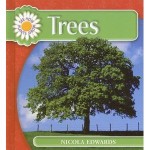 Trees. Nicola Edwards. 2008. Nonfiction. Grades K-4.
Trees. Nicola Edwards. 2008. Nonfiction. Grades K-4.
A comprehensive look at trees, including places where trees grow around the world, parts of a tree, and how trees grow. Includes a page with a cross section showing the annual rings. This book would be useful as a read-aloud with younger students, and perfect for independent or small group reading with older students.
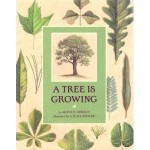 A Tree is Growing. Arthur Dorros. 1997. Nonfiction. Grades K-5.
A Tree is Growing. Arthur Dorros. 1997. Nonfiction. Grades K-5.
Follow the story of an oak tree through the seasons and learn about its parts, growth, and how it makes its own food. The colorful and detailed illustrations by S. D. Schindler make this book stand out! A two-page spread discusses and illustrates the annual rings.
 Tell Me, Tree: All about Trees for Kids. Gail Gibbons. 2002. Nonfiction. Grades 2-5.
Tell Me, Tree: All about Trees for Kids. Gail Gibbons. 2002. Nonfiction. Grades 2-5.
Learn all about trees and the many varieties found across the country and around the world. A page is dedicated to examining a cross section of a tree.
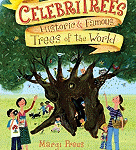 Celebritrees: Historic and Famous Trees of the World. Margi Preus. 2011. Nonfiction. Grades 3-5.
Celebritrees: Historic and Famous Trees of the World. Margi Preus. 2011. Nonfiction. Grades 3-5.
Learn about 14 famous trees in history or legend. One of the trees included is Methuselah, an almost 5,000-year-old bristlecone pine also discussed in our Feature Story.
Fossils
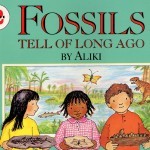 Fossils Tell of Long Ago. Aliki. 1990. Nonfiction. Grades K-3.
Fossils Tell of Long Ago. Aliki. 1990. Nonfiction. Grades K-3.
In this revised edition of her 1984 book, Aliki continues the conversational observations of a group of children as they make discoveries in a museum, marveling at and enjoying the bits of history cast in stone. In clear, precise language, she explains how dinosaur tracks are cast in mud, how insects trapped in sticky tree sap harden into amber, and how fossils of tropical plants are found in very cold places. The book closes with a suggestion for creating a fossil by making a clay imprint of a hand, letting it dry, and burying it for someone to find a million years from now.
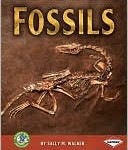 Fossils. Sally M. Walker. 2007. Nonfiction. Grades 3-5.
Fossils. Sally M. Walker. 2007. Nonfiction. Grades 3-5.
Readers learn how shells, fish, leaves, footprints, trees, and even mammoth hair are turned into fossils. The difference between fossil casts and molds is explained. The final two chapters discuss the difficulty of finding certain types of fossils and why scientists study fossils – one important reason being that fossils give clues to climate changes over thousands of years.
Ice Cores
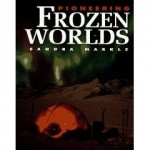 Pioneering Frozen Worlds. Sandra Markle. 1996. Nonfiction. Grades 4-5.
Pioneering Frozen Worlds. Sandra Markle. 1996. Nonfiction. Grades 4-5.
A primary science teacher turned writer explains how scientists are using technology to research the many forms of ice and snow, the wildlife, the atmosphere, and more in the Arctic and Antarctica. With each research field, she offers an investigation children can carry out alone or with classmates.
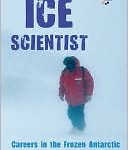 Ice Scientist: Careers in the Frozen Antarctic. Sara L. Latta. 2009. Nonfiction. Grades 4-5.
Ice Scientist: Careers in the Frozen Antarctic. Sara L. Latta. 2009. Nonfiction. Grades 4-5.
Designed for older learners, this resource explores different careers using the stories of real scientists in Antarctica. Included among the careers are geologist, paleontologist, glaciologist, astrophysicist, marine biologist, and oceanographer. Boxed text throughout adds interesting facts about the scientific research and Antarctica.
Earth’s Climate in the Past
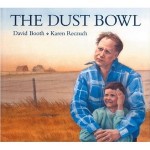 The Dust Bowl. David Booth. 1997. Picture book. Grades K-5.
The Dust Bowl. David Booth. 1997. Picture book. Grades K-5.
In this picture book, a young boy’s father and grandfather debate whether to sell the family farm in the face of an impeding drought. Through his grandfather’s stories, the boy learns about the Dust Bowl, or the “Great Dry,” of the 1930s.
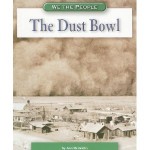 The Dust Bowl. Ann Heinrichs. 2005. Nonfiction. Grades 4-5.
The Dust Bowl. Ann Heinrichs. 2005. Nonfiction. Grades 4-5.
This well-written look at the Dust Bowl is enhanced by the use of primary source documents and many photographs from major archives.
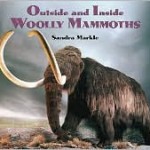 Outside and Inside Woolly Mammoths. Sandra Markle. 2007. Nonfiction. Grades 2-5.
Outside and Inside Woolly Mammoths. Sandra Markle. 2007. Nonfiction. Grades 2-5.
Mammoth remains discovered in the Arctic have taught us a lot about conditions during the last ice age. Mummified mammoths help us learn what they ate, what color their hair was, and how they walked. Tusk rings also give clues about the general nutrition available during their lifetime. Their large heart pumped massive amounts of warm blood throughout their body – which may have become problematic as Earth warmed. Great photos and comparisons with modern elephants.
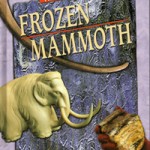 History Hunters: Frozen Mammoth. Dougal Dixon. 2004. Nonfiction. Grades 4-6.
History Hunters: Frozen Mammoth. Dougal Dixon. 2004. Nonfiction. Grades 4-6.
Dixon wrote this book as letters between scientists who are exchanging information about the discovery of mammoth mummies. Many of the frozen mummies have been discovered by native people in Siberia as the permafrost thaws. The mummies must be recovered before they rot.
This article was written by Jessica Fries-Gaither. Jessica is an education resource specialist at The Ohio State University and project director of Beyond Penguins and Polar Bears. She has taught in elementary and middle school settings. Email Jessica at beyondweather@msteacher.org.
Copyright July 2011 – The Ohio State University. This material is based upon work supported by the National Science Foundation under Grant No. 1034922. Any opinions, findings, and conclusions or recommendations expressed in this material are those of the author(s) and do not necessarily reflect the views of the National Science Foundation. This work is licensed under an Attribution-ShareAlike 3.0 Unported Creative Commons license.



